11 Surprising Facts About the Skeletal System
Surprise!
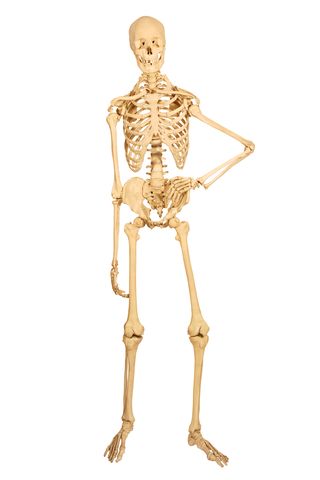
An adult's skeletal system consists 206 bones, 32 teeth and a network of other structures that connect the bones together. This system performs a number of vital functions, such as giving the body its form, assisting with bodily movements and producing new blood cells.
Here are 11 surprising facts about the skeletal system.
Babies have more bones than adults.
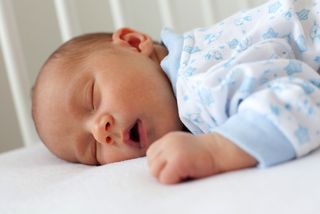
Adults have 206 bones in their bodies, but the same is not true for infants.
The skeleton of a newborn baby has approximately 300 different components, which are a mixture of bones and cartilage. The cartilage eventually solidifies into bone in a process called ossification — for example, the kneecaps of newborns start off as cartilage and become bone in a few years.
Over time, the "extra" bones in infants fuse to form larger bones, reducing the overall number of bones to 206 by adulthood.
The hands and feet contain over half of the body's bones.
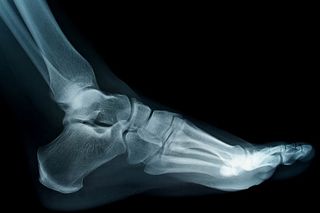
Bones come in all shapes and sizes, and are not evenly distributed throughout the body; some areas have far more bones than others. Coming out on top are your hands and feet.
Each hand has 27 bones, and each foot has 26, which means that together the body's two hands and two feet have 106 bones. That is, the hands and feet contain more than half of the bones in your entire body.
Some people have an extra rib that can cause health issues.
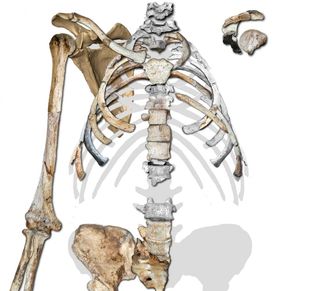
Most adults have 24 ribs (12 pairs), but about one in every 500 people has an extra rib, called a cervical rib. This rib, which grows from the base of the neck just above the collarbone, is not always fully formed — it's sometimes just a thin strand of tissue fibers.
Regardless of its form, the extra rib can cause health issues if it squashes nearby blood vessels or nerves. This results in a condition known as thoracic outlet syndrome, which is marked by pain in the shoulder or neck, loss of limb feeling, blood clots and other problems.
Every bone is connected to another bone — with one exception.
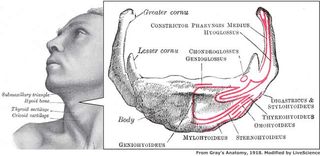
The hyoid is a horseshoe-shaped bone in the throat, situated between the chin and the thyroid cartilage. It's also the only bone in the human body not connected to another bone.
The hyoid is often considered the anatomical foundation of speech; because of where it's located, it can work with the larynx (voice box) and tongue to produce the range of human vocalizations. Neanderthals are the only other species to have hyoids like humans, and its presence in those hominids has led scientists to speculate that the Neanderthals had complex speech patterns similar to modern humans.
Ancient Egyptians developed the world's first functional prosthetic bone.
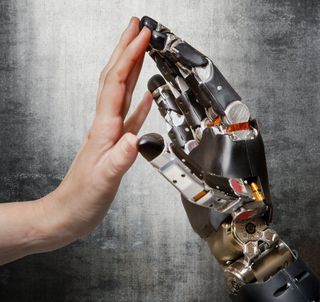
Prostheses are artificial devices that take the place of missing or injured body parts. Some prosthetic body parts are merely cosmetic — artificial eyes, for example — but prostheses that replace bones, such as prosthetic limbs or joints, have a functional purpose.
About 3,000 yeas ago, ancient Egyptians developed the first functional prosthesis: an artificial big toe. In 2011, researchers showed that Egyptians with the fake toes would have had a much easier time walking around in sandals than people who were missing their big toes but didn't get prostheses.
Human species have been dealing with bone tumors for 120,000 years.

Bones are made of active, living cells. And like the other cells in your body, the cells of your bones are susceptible to benign tumors and even cancer. But this is nothing new: Modern humans and their relatives have dealt with tumors for thousands of years.
In 2013, scientists found a tumor in a Neanderthal rib bone dating back 120,000 to 130,000 years. It is the oldest human tumor ever discovered.
Animals with internal, bony skeletons are in the minority.

The bony skeletal system in humans is hidden under layers of skin and muscle. The same is true for other vertebrates, or animals with backbones, including amphibians, birds, reptiles and fish. But vertebrates only account for 2 percent of the animal species on the planet; the other 98 percent are invertebrates, including insects, arachnids and mollusks.
This means that the vast majority of the animal species on the planet lack an internal or external skeleton made of bones. Some invertebrates have exoskeletons made of a fibrous substance called chitin, while others have a fluid-filled skeletal structure, as do jellyfish and worms.
Sharks lose thousands of teeth in their lifetimes.

Teeth are not counted as bones, but they are considered to be part of the skeletal system. Most people have 52 teeth in a lifetime — 20 "baby" teeth that fall out during childhood and 32 permanent teeth that grow in afterwards.
Sharks, on the other hand, have serrated front teeth and multiple rows of replacement teeth, which steadily move forward as the front teeth fall out. The teeth are sometimes replaced as frequently as once every 8 to 10 days, according to the Marine Education Society of Australasia, an organization that seeks to improve the understanding of marine environments. This high rate of replacement means that some sharks go through about 30,000 teeth in a lifetime.
Bones are not the hardest substances in the body.
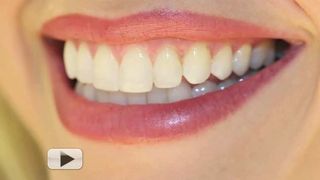
Bones are strong and rigid, and built to withstand a lot of force — pound for pound, they are stronger than steel. But, surprisingly, they are not the hardest substance in the body.
That title goes to another part of the skeletal system: tooth enamel. This substance protects the crown of teeth and owes its strength to its high concentration of minerals (calcium salts in particular), according to the National Institutes of Health.
People don't directly control their bones.
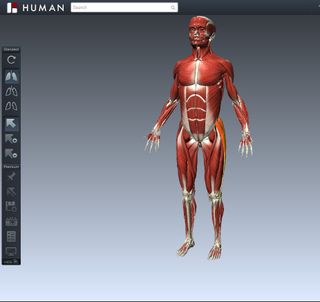
One of the staples of Halloween costumes and horror movies is the walking skeleton. Of course, such a creature is pure fiction because it has no brain or nervous system to control its movements. But even if it did have these vital components, the undead monster would still be unable to walk around.
When people move their arms, legs or any other part of their bodies, it's not because they tell their bones to move — it's because they tell their muscles, which are attached to their bones, to move.
Sign up for the Live Science daily newsletter now
Get the world’s most fascinating discoveries delivered straight to your inbox.
